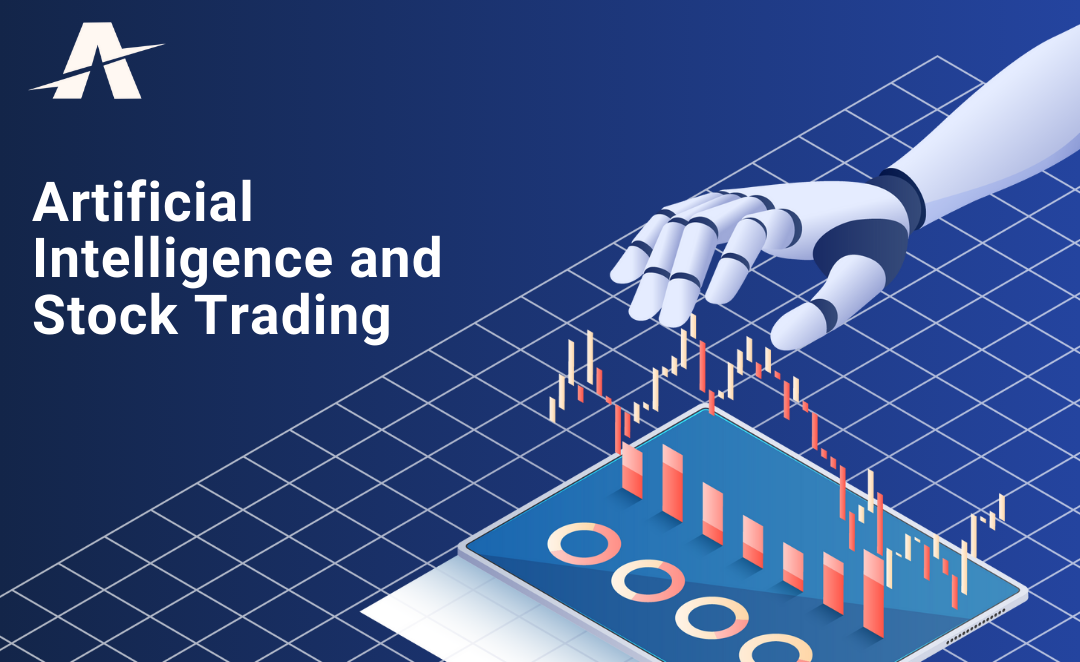Diversifying your data sources will aid in the development of AI strategies for stock trading that work on penny stocks as well the copyright market. Here are the top 10 AI trading strategies for integrating, and diversifying, data sources:
1. Utilize Multiple Financial News Feeds
TIP: Collect information from multiple financial sources, such as copyright exchanges, stock exchanges and OTC platforms.
Penny Stocks on Nasdaq Markets.
copyright: copyright, copyright, copyright, etc.
Why: Relying on a single feed can cause inaccurate or biased information.
2. Social Media Sentiment Analysis
Tips: Make use of platforms such as Twitter, Reddit and StockTwits to study sentiment.
Check out niche forums like r/pennystocks and StockTwits boards.
copyright Attention to Twitter hashtags as well as Telegram group discussions and sentiment tools, like LunarCrush.
Why? Social media can indicate hype or fears especially when it comes to speculation investments.
3. Utilize macroeconomic and economic data
Include information, like inflation, GDP growth and employment statistics.
What's the reason: Economic trends that are broad influence market behavior, giving an explanation for price movements.
4. Use on-Chain copyright data
Tip: Collect blockchain data, such as:
Wallet activity.
Transaction volumes.
Inflows and outflows of exchange
What are the reasons? On-chain metrics give unique insight into market activity in copyright.
5. Incorporate other data sources
Tip: Integrate unorthodox data types such as
Weather patterns in agriculture (and other sectors).
Satellite imagery (for energy or logistical purposes).
Web traffic analytics for consumer sentiment
Why: Alternative data can offer non-traditional insights to the generation of alpha.
6. Monitor News Feeds & Event Data
Tip: Use natural-language processing (NLP) tools to analyze:
News headlines
Press releases
Announcements on regulatory matters
News is a potent trigger for volatility in the short term which is why it's crucial to invest in penny stocks as well as copyright trading.
7. Track Technical Indicators Across Markets
Tips: Diversify your technical inputs to data by including multiple indicators:
Moving Averages
RSI is the relative strength index.
MACD (Moving Average Convergence Divergence).
The reason: Mixing indicators can improve predictive accuracy and reduce the need to rely on one single signal.
8. Include Historical and Real-Time Data
Tips Combining historical data for backtesting and real-time trading data.
Why? Historical data is a good way to validate strategies, while real-time information assures that they are able to adapt to the current market conditions.
9. Monitor the Regulatory Data
Tip: Stay updated on new laws, tax regulations, and changes to policies.
Check out SEC filings on penny stocks.
Follow government regulations, the adoption of copyright or bans.
Why: Changes in regulatory policy can have immediate, significant impacts on the markets.
10. Make use of AI to cleanse and normalize Data
AI Tools can be utilized to process raw data.
Remove duplicates.
Fill in gaps that are left by missing data.
Standardize formats across multiple sources.
Why: Normalized, clean data will ensure your AI model works optimally without distortions.
Take advantage of cloud-based software for data integration
Tip: Use cloud platforms such as AWS Data Exchange, Snowflake or Google BigQuery to aggregate data effectively.
Cloud solutions make it simpler to analyze data and integrate various datasets.
By diversifying the sources of data increase the strength and adaptability of your AI trading strategies for penny copyright, stocks and even more. Check out the recommended best ai stock trading bot free for website info including artificial intelligence stocks, investment ai, trading bots for stocks, ai investing, trading bots for stocks, penny ai stocks, ai stock predictions, best ai stocks, using ai to trade stocks, best ai trading bot and more.

Top 10 Tips For Understanding Ai Algorithms For Stock Pickers, Predictions And Investments
Knowing the AI algorithms that power the stock pickers can help you evaluate their effectiveness, and ensure they align with your investment objectives. This is true whether you're trading penny stocks, copyright, or traditional equity. This article will provide you with 10 tips for how to comprehend AI algorithms used to predict stocks and investment.
1. Machine Learning: Basics Explained
Tip: Learn the core notions of machine learning (ML) models like unsupervised and supervised learning and reinforcement learning that are often used in stock prediction.
Why: This is the basic technique that AI stock pickers employ to study historical data and forecasts. An understanding of these concepts will allow you to understand how the AI analyzes data.
2. Familiarize Yourself with Common Algorithms used for stock picking
Tips: Study the most commonly used machine learning algorithms for stock picking, including:
Linear regression: Predicting future price trends by using historical data.
Random Forest: Using multiple decision trees for better precision in prediction.
Support Vector Machines: Classifying stocks based on their characteristics as "buy" as well as "sell".
Neural Networks (Networks) Utilizing deep-learning models to identify complex patterns from market data.
Understanding the algorithms used by AI will help you make better predictions.
3. Study Feature Selection and Engineering
Tips: Learn how AI platforms select and process various features (data) for prediction, such as technical signals (e.g. RSI or MACD), market sentiments, financial ratios.
What is the reason: The performance of AI is greatly influenced by quality and the relevance of features. Features engineering determines the ability of an algorithm to discover patterns that could result in profitable predictions.
4. Look for Sentiment analysis capabilities
Tip: Verify that the AI is using natural processing of language and sentiment analysis for data that is not structured, such as tweets, news articles, or social media postings.
The reason: Sentiment analysis can help AI stock pickers assess market sentiment, particularly in highly volatile markets such as penny stocks and cryptocurrencies where news and sentiment shifts can significantly impact prices.
5. Understand the Role of Backtesting
Tips: Ensure that the AI model performs extensive backtesting with historical data to refine predictions.
Why? Backtesting helps discover how AIs been able to perform under previous market conditions. It provides insight into the algorithm's robustness and resiliency, making sure it's able to deal with a range of market scenarios.
6. Review the Risk Management Algorithms
Tips: Find out about AI's risk-management tools, including stop-loss order, position size and drawdown limits.
The reason: A well-planned risk management can avoid major losses. This is crucial for markets that have high volatility, like penny stocks and copyright. To ensure a well-balanced trading strategy and a risk-reduction algorithm, the right algorithms are crucial.
7. Investigate Model Interpretability
Search for AI software that offers transparency in the process of prediction (e.g. decision trees, features value).
Why? It is possible to interpret AI models let you know the factors that drove the AI's recommendation.
8. Review Reinforcement Learning
Tip: Read about reinforcement learning, which is a part of computer-based learning where algorithms adjust strategies through trial-and-error, and then rewards.
Why is that? RL is used to trade on markets that have dynamic and shifting dynamic, like copyright. It can optimize and adapt trading strategies on the basis of feedback, which results in a higher long-term profit.
9. Consider Ensemble Learning Approaches
Tip
Why do ensemble models boost the accuracy of prediction by combining strengths from different algorithms. This reduces the likelihood of errors and improves the reliability of stock-picking strategies.
10. Be aware of the difference between Real-Time and. Historical Data Use
Tip: Understand whether the AI model is based more on current data or older data to make predictions. AI stockpickers usually use a combination.
Why is real-time data essential for trading strategies that are active for volatile markets, such as copyright. But, data from the past can be helpful in predicting trends over time. It is best to strike a balance between both.
Bonus: Understanding Algorithmic Bias, Overfitting and Bias in Algorithms
Tips: Be aware of possible biases that could be present in AI models. Overfitting occurs when a model becomes too specific to the past and cannot generalize into new market conditions.
Why: Overfitting and bias can lead to inaccurate forecasts when AI is applied to real-time market data. To ensure the long-term efficiency of the model the model needs to be regularly standardized and regularized.
Understanding AI algorithms used by stock pickers will allow you to evaluate their strengths, weaknesses, and their suitability, regardless of whether you are focusing on penny shares, cryptocurrencies, other asset classes, or any other form of trading. This will allow you to make better choices when it comes to choosing the AI platform that is best suitable for your strategy for investing. Take a look at the best next page for smart stocks ai for blog recommendations including ai stocks to invest in, ai stock picker, ai predictor, artificial intelligence stocks, ai predictor, ai investment platform, using ai to trade stocks, ai stock trading, ai trading software, trading with ai and more.
